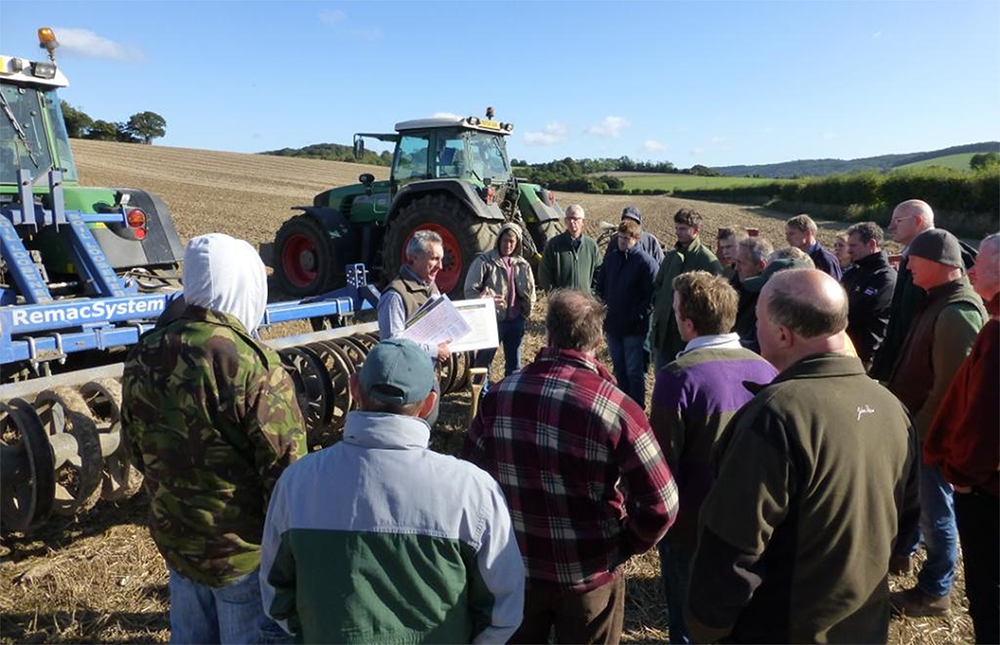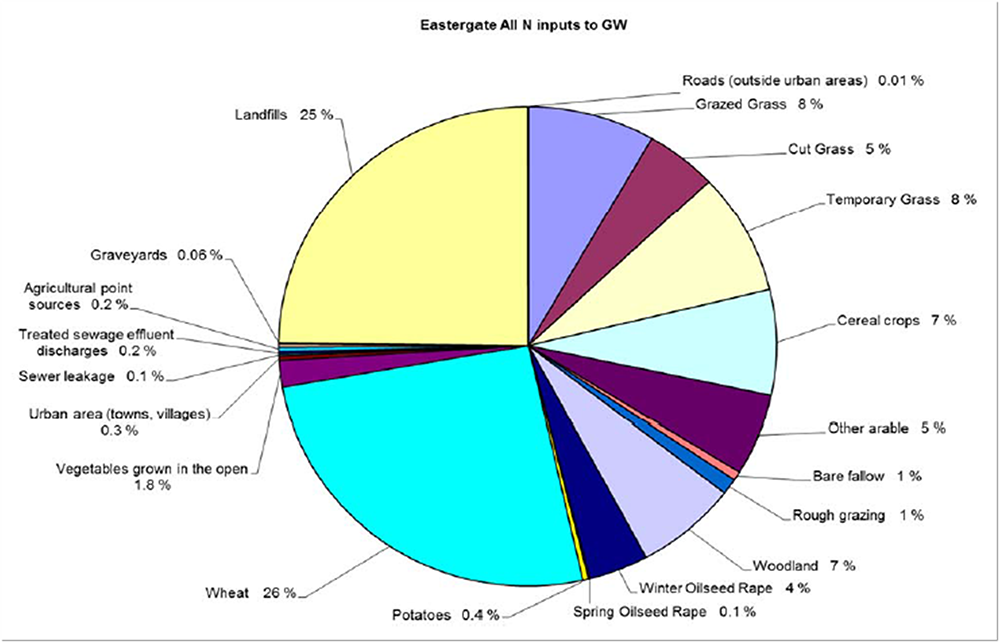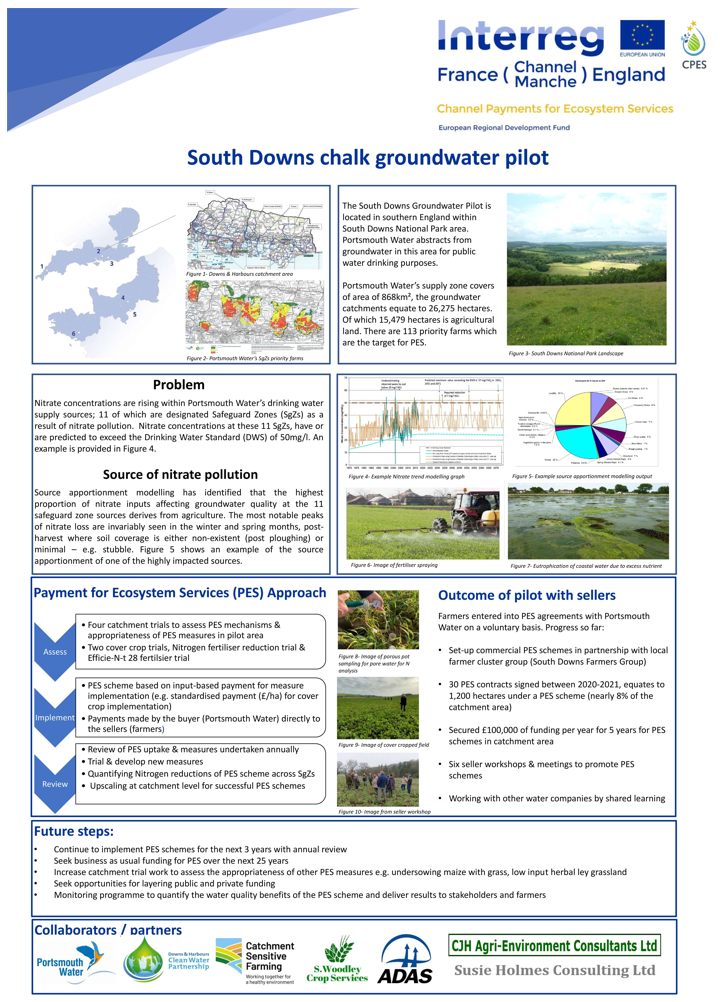The South Downs chalk grasslands are located in southern England, within South Downs National Park. Portsmouth Water abstracts from groundwater tables in the area, providing drinkable water to Bognor’s region. But some of the abstraction points experience high levels of nitrate contamination of groundwater.
The company works with 4 sources to feed Littlehealth reservoir, mixing the water together. By the dilution of nitrates from the 4 sources, the company complies with the nitrates directive and drinking water standards. But the nitrates levels increased during the last 10-20 years from the 4 sources, and compromised the ability to blend the waters in the reservoir. Using models, they know that have to work on one source to continue blending in the future: Eastergate source.

Real time nitrate monitoring is done every 15 minutes at the pumping station, to get a real detailed time series. Models from observed data of nitrate levels show that since the 90’s, nitrate levels have been increasing; but the key problem are the numerous intermittent spikes that breach the line of drinking water standard of 50mg/l of nitrates. Zooming on the spikes, it shows two period signatures: usual seasonal peaks in the late autumn-winter and extreme peaks in response to intense rainfall events.
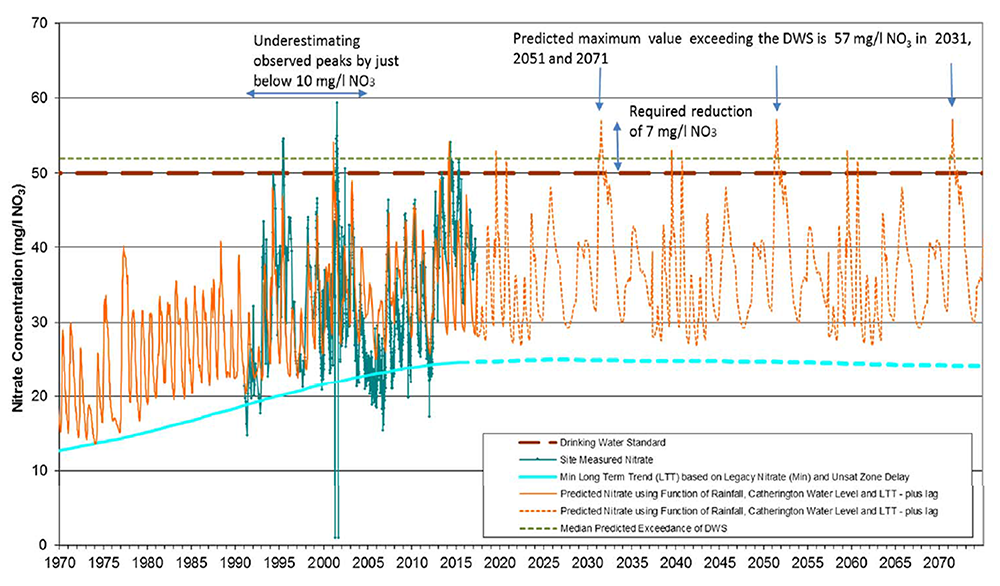
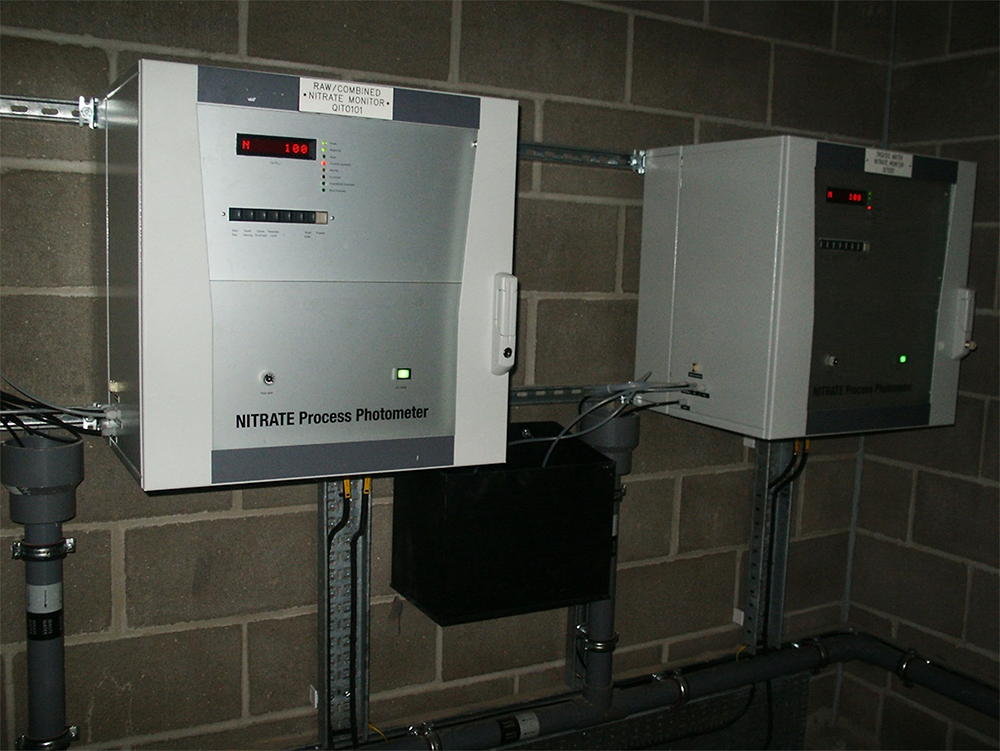
The pumping stations draw water from the chalk aquifer, which work like a sponge gradually percolating water, taking a long time for the water to reach the sources and also gradually releasing nitrates over time. With the information of the spikes linked to events of few hours, linking with the geology of the catchment, the research shows that hundreds of karstic features, solution features created in the chalk appearing on the surface on fields like a basin, could be the pathway straight to the source. Portsmouth Water undertook Lidar analysis coupled to rainfall modelling to identify where might be the features, and underground analysis using tracer injected in the solution features which proved a link by finding the tracer in their boreholes.
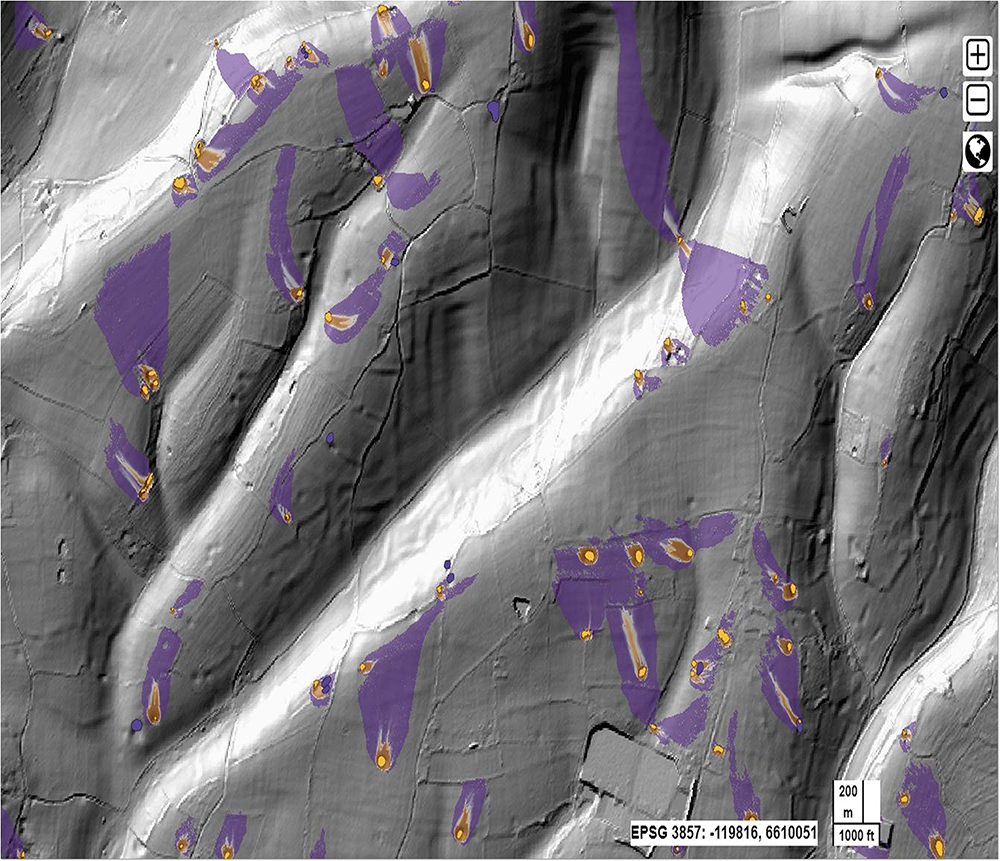
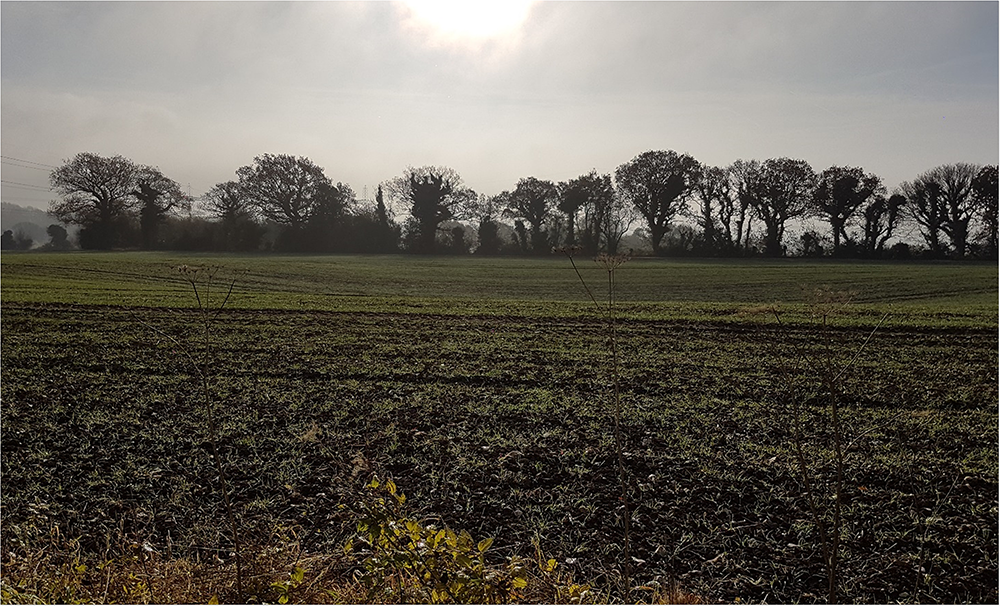
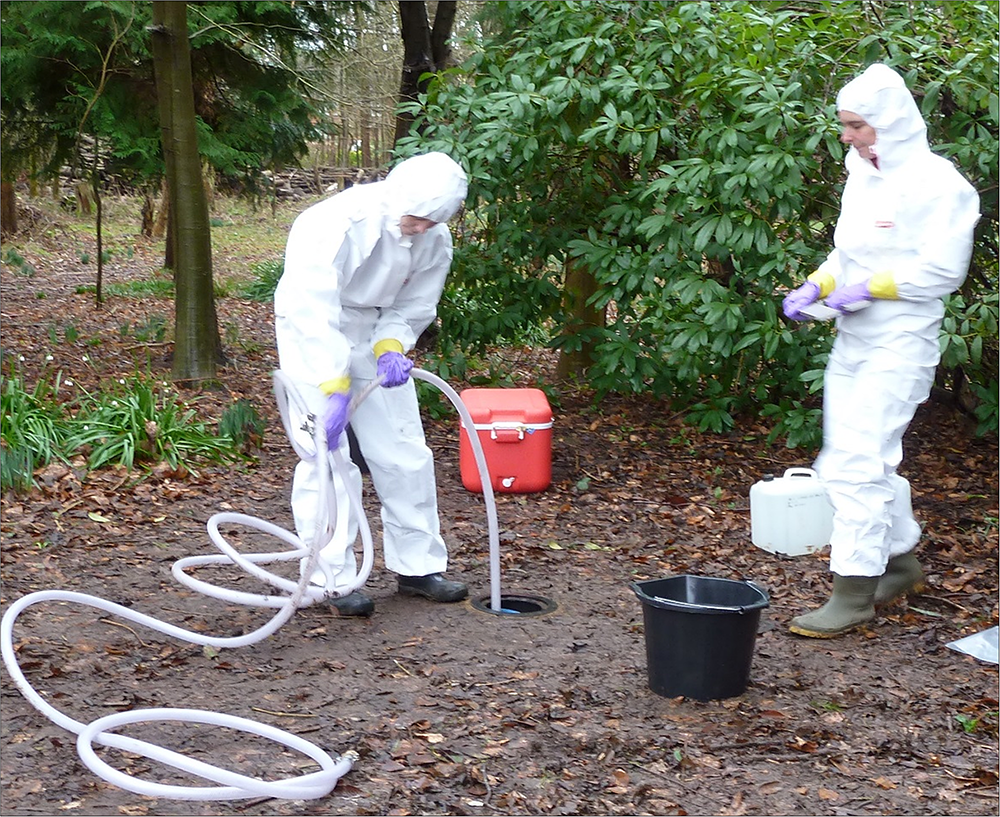
Without action, the trends show that the company could lose the ability to supply from its reservoir in 2040. Future costs could be: the closure of sources and loss of Portsmouth Water’s UK license to supplies public water if nothing is done, or an indicative modelled budget of £3.3 million between 2020 and 2075 for catchment management in Eastergate’s catchment to deliver nitrate compliant, or a £8 million budget by 2075 for building and working a nitrate removal plant.
To solve the problem within the 20 years’ time, or having to find alternative sources, develop works and get the authorizations, it is time to take action, choosing catchment management. Catchment management measures delivers much more environmental improvements in terms in wider ecosystem services benefits than “saving money”: provisioning services (crop production, timber production…), regulating services (water issues services, as quality, flood prevention, erosion control…), cultural services (recreation, spiritual values and aesthetic enjoyment, within the South Downs National Park connecting to landscapes), and supporting services (natural processes that maintain the production of all other ecosystem services such as habitat provision, nutrient cycling, soil formation…).
To make these groundwaters issues a reality on the ground and solve them, it is important to know what the problems are, who the stakeholders are in the catchment, and then who they need to work with. Within the partnership Portsmouth Water – University of Chichester - Southern Water, a stakeholders’ analysis is led: it results in this area that the problem and the solution lie on working with the farmers. It is confirmed by the modelling which shows where the nitrate comes from: principally agriculture sector, especially cereal production with a major contribution, over 40%, from cropping of arable land, principally wheat, cereal crops and improved grasslands.
Direct catchment management has to be focused on the mechanisms for producing the spikes and on fields with the features: the land use map identifies where to focus the work. A priority map is designed on bases of the presence of karstic features, deepness of groundwater table, distance of the field from the source and nitrate loading.
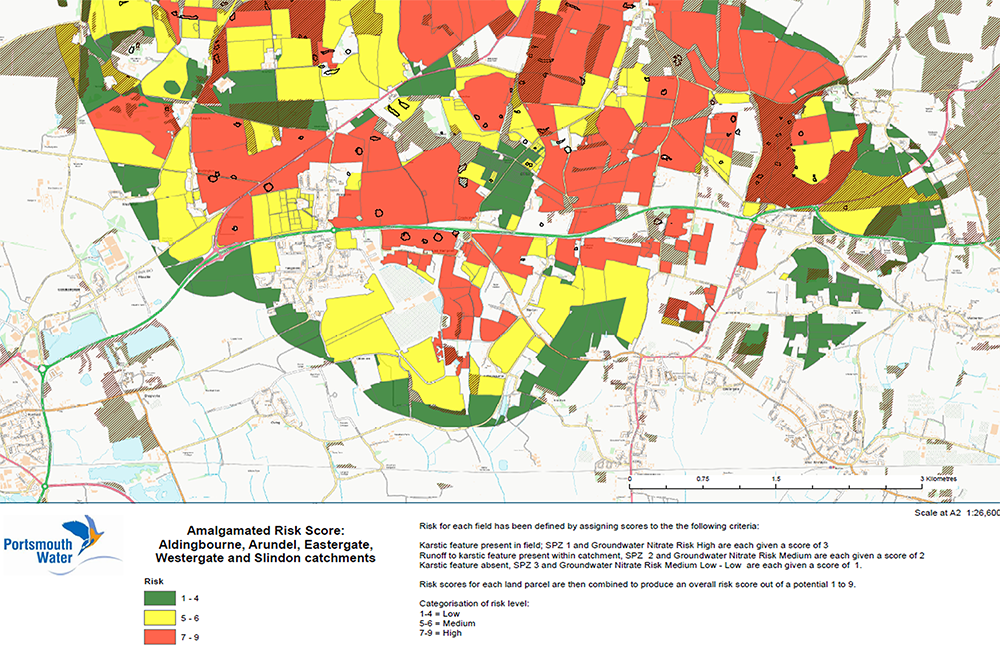
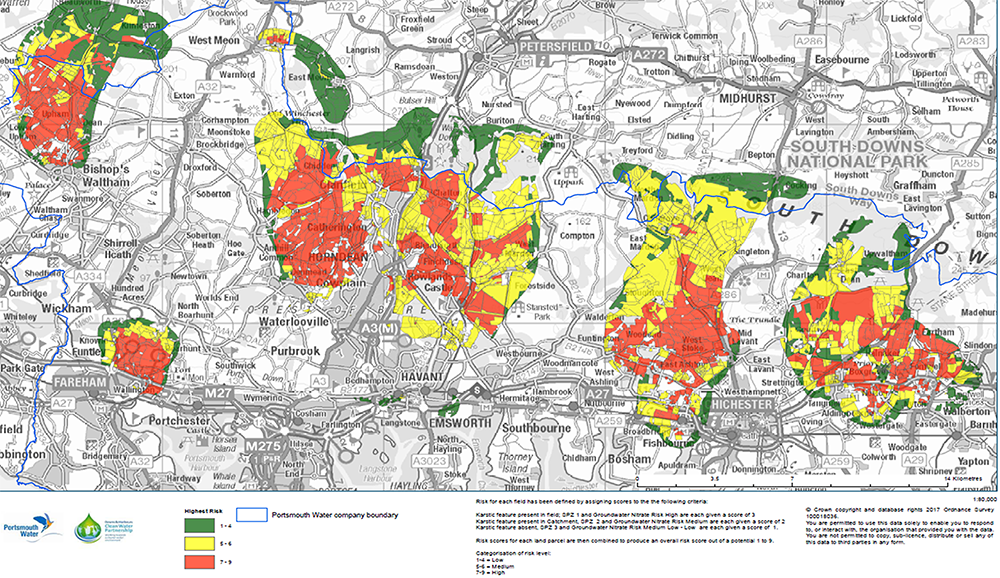
Studying what could be delivered in the catchment management, the most cost-effective measures selected are woodland creation and improved soil management, solutions trialed through CPES project in Eastergate catchment. Work is done with the UK Forestry Commission, experts in planting trees and forest creations, to make their schemes more economically attractive and incentivize woodland creation further by an annual top-up in complement to forestry commission, providing a cost-effective for the lifetime of that woodland stand. The cover crop trial is based on trying crops between the rotations to ensure that the excess nitrate in sucked up, for a 3 years cover crop trial, trying to understand deeper how chalk landscapes respond to that.
Portsmouth Water, thanks to its farmers’ engagement program led for almost the last 10 years, already provides free advices to improve soil management and farming practices to help reducing nitrate levels and comply with the Water framework directive. It developed a good reputation and relation with the farmers, with who they will trial the solutions.
